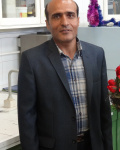| نویسندگان | فاطمه برگزینی - مهدی محمدی مهر - Elmuez A. Dawi - رزیتا منصف - زهرا حیدریان - مسعود صلواتی نیاسری |
|---|---|
| نشریه | Journal of Materials Research and Technology |
| نوع مقاله | Original Research |
| تاریخ انتشار | 2023-02-06 |
| رتبه نشریه | ISI |
| نوع نشریه | الکترونیکی |
| کشور محل چاپ | ایالات متحدهٔ امریکا |
| نمایه نشریه | SCOPUS ,JCR |
چکیده مقاله
In this study, we describe a facile hydrothermal method for synthesis of carbon nano-arrays, using materials available locally, resulting in an affordable autoclave system. Stainless steel type 1.4401 (with grade 316) possesses high temperature mechanical properties and anticorrosion characteristics and is therefore appropriate for autoclave device construction. For analysis, a systematic study of the three Von Misses stress models of an autoclave system was performed using Abaqus software. Also, the effect of the component's thickness on the stress concentration was examined. This was done to find the most optimal mode of the autoclave's resistance to stress caused by temperature and pressure. So, for further evaluation of this reactor in the laboratory, a series of experiments was designed. It is interesting to find that natural potato and chemical starch as low-cost precursors play a vital role in constructing carbon-based nanomaterials. In this study, by utilizing natural extracts and chemical precursors, the potential of designed autoclave systems has been explored in the fabrication of carbon materials with diverse shapes of nanorods and nanospheres. The structural, chemical compositional and morphological changes of the products were characterized by X-ray diffraction (XRD), Fourier transform infrared spectroscopy (FT-IR), energy-dispersive X-ray spectroscopy (EDS), field emission scanning electron microscopy (FE-SEM) and transmission electron microscopy (TEM) analyses. As the precursor was changed, a significant difference was observed in the shape and morphologies of the black nano-products. Such results suggest competition between designed and commercial autoclaves in the fabrication of nanomaterials. More importantly, these structure-controlled carbon nanomaterials with unique properties can be explored in many practical applications.
